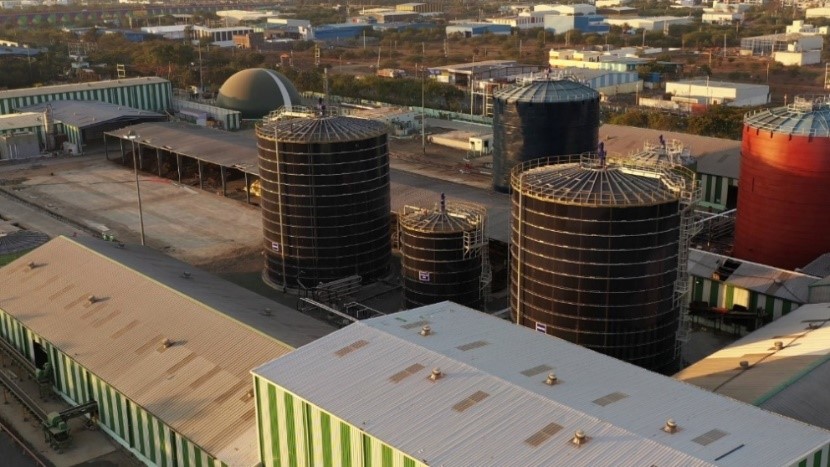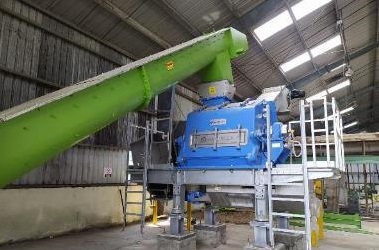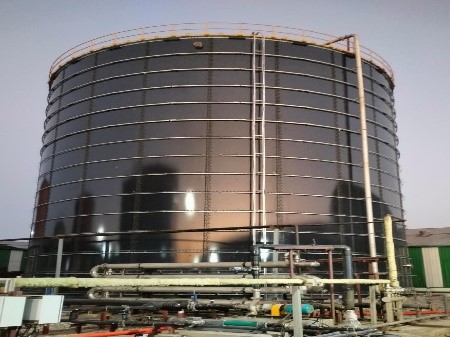Galvanizing Organic Bio-Agro Resources Dhan (GOBARdhan), an umbrella initiative of Government of India, aims to convert “waste to wealth” and build a robust ecosystem for setting up Biogas/Compressed Biogas (CBG)/Bio-Compressed Natural Gas (CNG) plants to drive sustainable economic growth and promote a circular economy. Budget 2023 lay emphasis on 500 new Waste to Wealth plants under the GOBARdhan scheme for promoting circular economy, including 200 compressed biogas plants, 75 in urban areas, 300 community or cluster-based plants. Currently over 50 CBG plants have been approved for effective resource recovery from organic waste under the GOBARdhan scheme. It is proposed to attain 15,000 TPD treatment capacity for bio methanation plants by 2026.


In February 2022, Prime Minister Shri Narendra Modi inaugurated Asia’s biggest municipal solid waste based GOBARdhan plant in Madhya Pradesh’s Indore, aiming to generate 19,000 kg bio-CNG gas. Under SBMU 2.0, the bio-methanation plant linked to the GOBARdhan and SATAT schemes would produce Bio-CNG as a renewable energy. The Indore Municipal Corporation (IMC) undertook a unique initiative of wet waste to Bio-CNG conversion to discourage the practice of using petroleum in public transport and curb air pollution. Understanding the complete process and methods of converting waste into energy at the plant is fascinating, especially considering the dedicated workforce that has been tirelessly driving the project forward. The plant is completely automated, except for the waste segregation input, which is partially automated.
The operations at the plant have been divided into three shifts for smooth functioning. Operators are deployed for operating key equipment and PLC. Segregated waste collected from households, commercial and other establishments is brought in at the site in compactor trucks and measured at the weigh bridge at around 7 am. Then the flag man and unloading supervisor unload the vehicle into deep bunkers for waste sampling to be done in order to understand its characteristics and deviations. Electricians, fitters and helpers carry out the general day-to-day processing work while the central lab team is responsible for quality control of raw material and the end-product. The gas quality is measured online. Meanwhile, general labourers have been deployed for cleaning, sampling, dosing, maintenance and other operations related work at the plant. The operators at the plant are provided with sufficient Personal Protective Equipment (PPE) kits, which is a must for all, to ensure safe handling of waste.
The operators feed the waste to primary hoppers for further screening and send it to hammer mills for slurry making. Subsequently, the waste slurry is routed to the hydrolysis which has 1.5 to 2-day retention time for acidification and hydrolysis of complex organic material to simple organics. The Anaerobic digestion stage is a multi-functional process that integrates environmental protection, renewable energy production, waste management and so on. The biomethane produced from digestion of organic matter can be injected into the grid or can be used as a cooking fuel. By this process, the operators divert the energy produced from digestion back to the energy cycle, making maximum efficiency possible. Production of biogas from organic matter involves a number of microbiological activities which convert solid or semi-solid materials into gaseous form. The generated biogas is the metabolic product of the involved bacteria.


The Indore plant generates Bio-CNG gas with more than 95% methane. The IMC, in association with IEISL (Indo Enviro Integrated Solutions Ltd),has been processing source segregated municipal organic waste generated from Indore city for the last few years now. A total of 550 tonnes of municipal organic waste is processed at this plant every day, which produces nearly 17,000 Kg Bio-CNG gas in addition to 100 tonnes of high-quality compost after processing of the waste. Furthermore, the CO2 emission reduction is targeted to be approximately 1,30,000 tonnes per year which is to be used for carbon credit. Notably, for the past few days, the facility has consistently ensured the highest amount of CBG production, reaching a milestone of 15 metric tonnes per day. This achievement came on the back of the relentless efforts that powered the workforce through challenges, curbing the roadblocks on their journey towards a sustainable future.
For regular updates, please follow the Swachh Bharat Mission’s official website and social media properties:
Website : www.sbmurban.org
Facebook : Swachh Bharat Mission - Urban | Twitter: @SwachhBharatGov
Instagram: sbm_urban | YouTube: Swachh Bharat Urban | Linkedin: swachh-bharat-urban